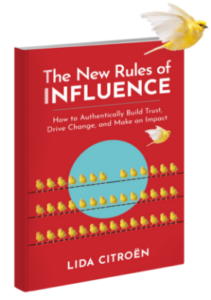There you sit facing an inbox full of LinkedIn connections from people you know, strangers you’ve never heard of, and folks you wish you could forget. So, when do you accept, ignore, and ![]() respond to invitations to connect?
respond to invitations to connect?
I treat LinkedIn as a strong networking tool. I do not advise taking an “everyone into the pool” approach of accepting and initiating connections willy-nilly. Having benefitted from leads, clients, media attention, and reputation management enhancement from my positioning on LinkedIn, I take this tool very seriously.
Start with a Strategy
I always advise professionals on social media to work off a strategy. To spend time on a site as powerful and lucrative as LinkedIn without a game plan is like taking a cross-country trip without a GPS. You may enjoy the ride, have some great experiences along the way, and end up in Texas instead of New York if you’re not focused and strategic. To build online credibility and see results from LinkedIn requires a strategy that helps you determine:
- How do I want to be positioned online? Do I seek subject matter expert (SME) status? Am I credible?
- Are there keywords that support my expertise and allow me to stand apart from others in my space? Instead of using “marketing” as my keyword, should I use “internet marketing for accounting firms”?
- Who is my target audience? It is critical to know who you are trying to reach — what groups, forums, and connections will they value and participate in?
- How much time and effort can I spend on LinkedIn? A one-hour-per-week game plan will look different than someone who can dedicate an hour a day.
Accepting and Rejecting LinkedIn Invitations to Connect
When someone sends you an invitation to connect, there are several things to look for in deciding whether to accept. There are always exceptions to these guidelines, but as a general rule:
Accept the invitation if:
- You know this person and he/she is someone you admire, trust, have a good relationship with, or would like to know better.
- You don’t know this person, but after reviewing their profile you see that you have something in common; Maybe you went to the same college, grew up in the same town, worked for the same company, etc., or their work experience or current work intrigues you. Or, perhaps this person shares connections with you that are valuable and credible to you.
- You are willing to network with this person going forward. Do you see an opportunity to help them? Can you offer them information or connections? Will they serve to enhance your network, knowledge level, or ability to compete in your industry?
- They reviewed your profile and/or they personalized the invitation to connect. When someone takes the time to customize the invitation–particularly if they point out an opportunity they see–it is worth looking further.
Ignore (reject) the invitation if:
- You know this person and he/she is someone you’ve had a negative experience with in the past or do not want to know them going forward. Remember, if you accept the connection, you invite them into your valued network.
- After reviewing their profile, you see nothing in common with where you are in your career/job or where you aspire to be. For instance, a prosecuting attorney in Cleveland might choose to reject a LinkedIn invitation from a telemarketer in the Philippines. An administrative assistant in Los Angeles might not accept an invitation from a multi-level marketing specialist in Houston.
- You suspect they are trying to accumulate connections without much thought. One tip I offer is to see if this person viewed your profile. If they did not, and you are struggling to see how a connection to them would help either of you, then consider ignoring the request. Later, if you see that they viewed your profile, you can accept the connection.
- Their profile is not filled out, there is no photograph and their background has no work experience. This could indicate a spam profile.
This is your LinkedIn network–you get to control and design how you want it to work for you (based on your personal brand and reputation management strategy). When you accept and reject invitations to connect, you are building your online reputation intentionally and strategically.
Be sure to stay tuned for my next blog: LinkedIn Connections Part II: Knowing Who (and how) to Invite Connections on LinkedIn


Very good write-up. I definitely love this site.
Continue the gopod work!